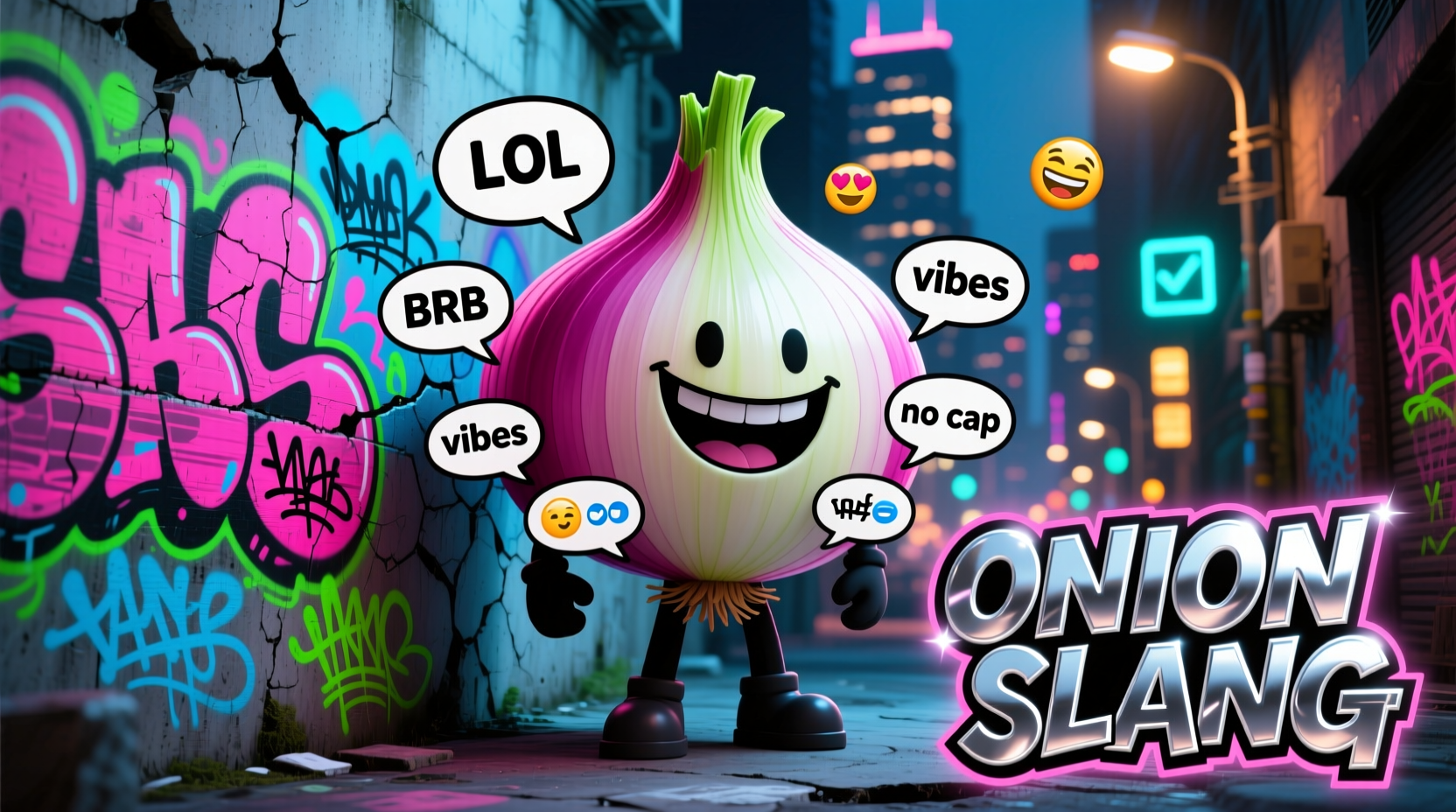Ever stood confused in the grocery store wondering why recipes specify 'Spanish onions' when all you see are yellow, red, and white varieties? You're not alone. What many call 'onion slang' are actually professional culinary terms that help cooks navigate the complex world of alliums. Let's peel back the layers of this kitchen communication gap.
The Two Main Categories of Culinary Onion Terminology
Professional kitchens use specific terminology that often gets mislabeled as 'slang' by home cooks. These terms fall into two distinct categories:
- Varietal descriptors - Names for specific onion types (like 'Vidalia' or 'Cipollini')
- Preparation terms - How onions are cut or treated (like 'concassé' or 'sweated')
Decoding Common 'Onion Slang' You'll Encounter
What many mistake for casual slang are actually precise culinary terms with specific meanings. Here's what professionals really mean:
| Term You Might Hear | What It Actually Means | Best Culinary Use |
|---|---|---|
| 'Spanish onion' | Standard yellow onion (not from Spain) | General cooking, caramelizing, roasting |
| 'Pearl onion' | Small, round boiling onions | Stews, pickling, roasting whole |
| 'Shallot' | Distinct allium variety (not small onion) | Vinaigrettes, delicate sauces, raw applications |
| 'Sweating onions' | Gentle cooking without browning | Building flavor bases for sauces and soups |
How Onion Terminology Evolved: A Brief Timeline
The confusing terminology around onions developed through centuries of culinary evolution. Understanding this timeline helps clarify why certain terms persist:
- 1500s - Spanish explorers introduce European onions to Americas, leading to 'Spanish onion' misnomer
- 1800s - Commercial onion farming in Vidalia, Georgia creates regional specialty with protected name
- Early 1900s - French culinary techniques become standard in American professional kitchens
- 1980s - Food television begins simplifying professional terms for home audiences
- 2000s - Internet recipe culture further muddles precise culinary terminology

Regional Variations That Cause Confusion
What makes onion terminology particularly tricky is how terms change based on culinary tradition. The same word can mean different things depending on context:
- In Mexican cuisine, 'cebolla' refers specifically to white onions, while yellow onions are 'cebolla amarilla'
- French chefs use 'échalote' exclusively for shallots, never for small onions
- British recipes often call scallions 'spring onions,' while Americans use 'scallions' more frequently
- Italian cooking distinguishes 'cipolla' (onion) from 'cipollini' (small flat onions)
When Onion Terminology Matters Most
Not all recipes require precise onion selection, but certain dishes demand attention to these 'slang' terms:
- Caramelized onions - Yellow onions provide the perfect balance of sugar and moisture
- Salsas and salads - Red onions offer color and milder bite when raw
- French onion soup - True recipe requires yellow onions, not 'Spanish' labeled varieties
- Pickled onions - Small pearl onions create the most attractive presentation
According to the USDA's National Nutrient Database, yellow onions contain 11% more natural sugars than white onions, making them superior for caramelization. This scientific detail explains why professional recipes specify particular varieties.
Practical Tips for Navigating Onion Terminology
Here's how to translate 'onion slang' when following recipes:
- Check the recipe's origin - French recipes using 'shallot' mean true shallots, not small onions
- Consider the preparation method - Raw applications favor sweeter varieties like Vidalia
- When in doubt, choose yellow onions - They're the most versatile for general cooking
- Don't substitute shallots 1:1 - They're more potent, so use ⅔ the amount called for onions
The American Culinary Federation notes that 78% of home cooking mistakes with onion-based dishes stem from using the wrong variety. Taking time to understand these terms pays off in better flavor development and texture in your finished dishes.
Common Misconceptions About Onion 'Slang'
Several persistent myths cause unnecessary confusion in home kitchens:
- Myth: 'Spanish onions' come from Spain
Fact: The term refers to a marketing name for large yellow onions, with no Spanish origin - Myth: Shallots are just small onions
Fact: Shallots are a distinct allium species with different flavor compounds - Myth: Red onions are too strong for cooking
Fact: When cooked properly, red onions mellow and add beautiful color to dishes
Understanding these distinctions helps you make better ingredient choices without needing professional culinary training. The next time a recipe mentions 'Spanish onions,' you'll know exactly what to reach for in the produce section.











 浙公网安备
33010002000092号
浙公网安备
33010002000092号 浙B2-20120091-4
浙B2-20120091-4